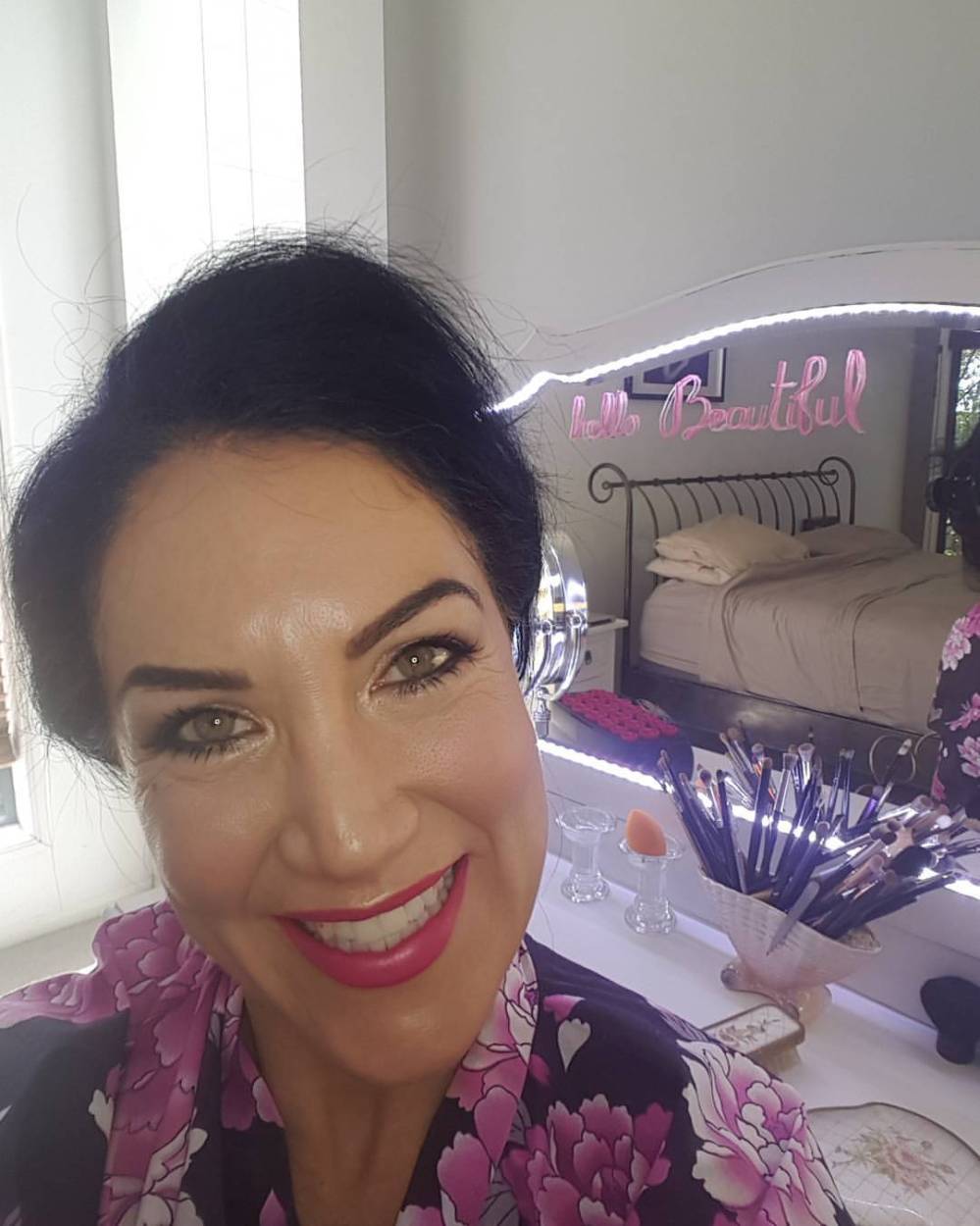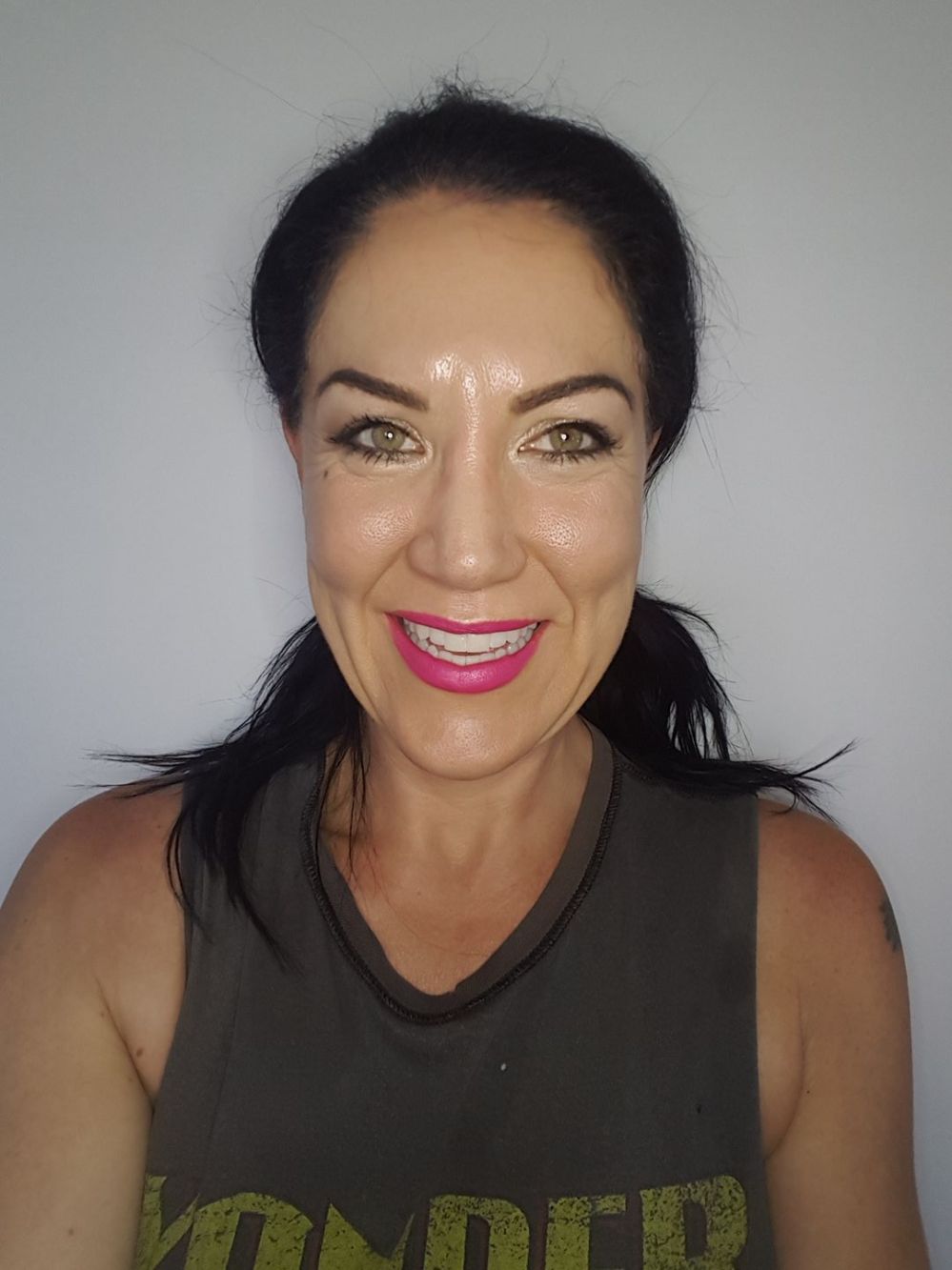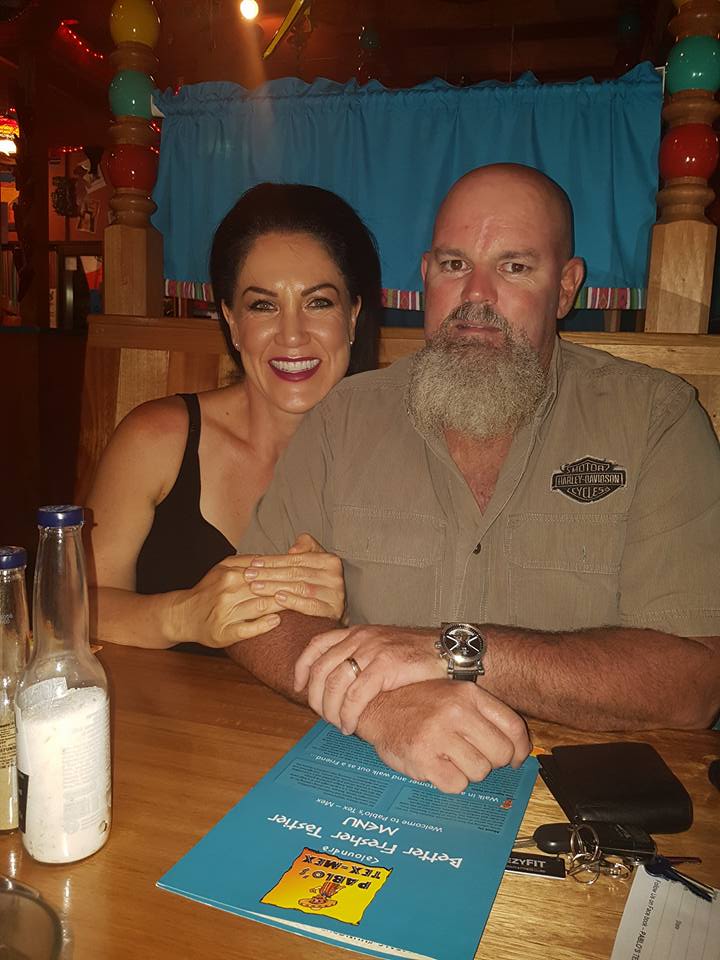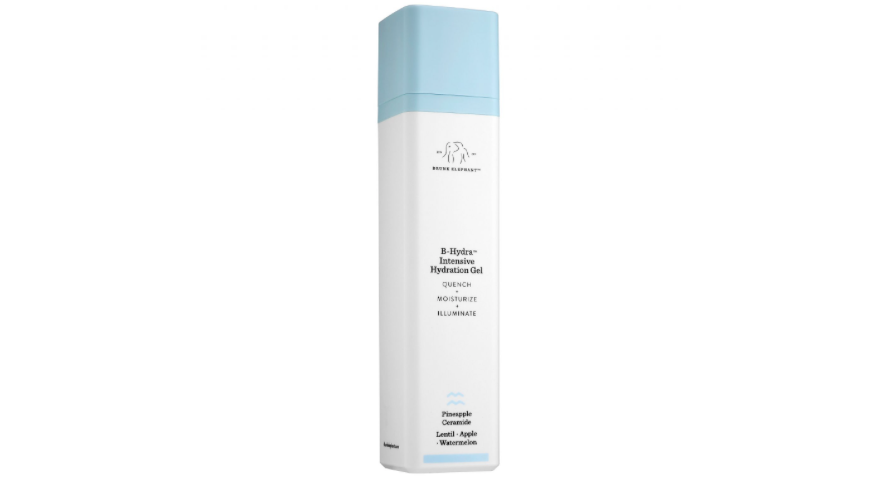
AHA’s, BHA’s and Drunk Elephant’s TLC
I first started working with glycolic acid products in the early 90s when AHA’s (Alpha Hydroxy Acids) hit the market in a big way. Back then there was so much trepidation in the industry around using AHA’s that as a Beauty Therapist I had to first attend courses to become certified in using AHA products in salon.
 Fast forward twenty-two years and now the market is flooded with over the counter AHA & BHA products with just as much misinformation for the consumer. So in the review of the Drunk Elephant TLC Framroos Glycolic Night Serum I thought I would clarify the difference between AHA’s, BHA’s and what they actually do.
Fast forward twenty-two years and now the market is flooded with over the counter AHA & BHA products with just as much misinformation for the consumer. So in the review of the Drunk Elephant TLC Framroos Glycolic Night Serum I thought I would clarify the difference between AHA’s, BHA’s and what they actually do.
What is an AHA?
AHA is an acronym which stands for alpha hydroxy acid derived from either naturally occurring plant sources or can be synthetically produced. So just because a product contains the ingredient AHA it doesn’t necessarily mean its from a natural source. AHA’S are usually added to leave on products as they need time to work, disintegrating the ‘cement’ or ‘glue’ that holds dead skin cells in place within the stratum corneum of the epidermal skin (see diagram below).

(Source: http://au.pinterest.com/explore/layers-of-skin/)
The most common AHA’s include glycolic acid, lactic acid, malic acid, citric acid, and tartaric. AHA’s have humectant qualities which means they attract water and can be hydrating for the skin. Ideally used on a clean bare skin.
What is a BHA?
BHA is an acronym which stands for beta hydroxy acid, this is a little different from an AHA as it can penetrate to the bottom of the pore (see diagram below) and clean it out, which is great for acne prone skin or clogged pores. Oil soluble BHA’s can penetrate the natural oil barrier of the skin, however they are not humectant and can be drying on the skin. BHA doesn’t cause photosensitivity and can be used either morning or evening. Great for use as a spot treatment on pimples.

(Source: http://shrinkmypores.net/2016/01/13/why-are-my-pores-so-big/)
What Makes Drunk Elephant TLC Framroos Glycolic Night Serum Different?
Drunk Elephant TLC Framroos Glycolic Night Serum contains both AHA’s and BHA’s so it breaks down the glue holding dead skin cells as well as clearing out pores from the bottom up. The acronym TLC actually stands for tartaric, lactic and citric acid which feature in this product.
For a product to be an effective exfoliator it should contain around 5-10% AHA, where the Drunk Elephant TLC Framroos Glycolic Night Serum contains 12% with 1% of that being salicylic (BHA) content. This is a highly active AHA and BHA ingredient content which makes this product highly effective.
When first starting to use AHA’s it is recommended to build up the tolerance of the skin by using either smaller percentage AHA products and building up the % gradually. Or in the case with this product intermittent use, i.e. once or twice a week building up regularity as the skin gains acceptance of the product.
As I have been using AHA and BHA products prior to this 10-day trial I have had no problems using this AHA/BHA product nightly. Having an oily thicker skin, I tend to not suffer issues with product sensitivities in general, however I would suggest people with identified sensitivities should trial this product and maybe build resistance slowly.
As the name suggests the product is used as a night serum on clean skin, however the Drunk Elephant B-Hydra Hydrating gel can be applied as well for extra hydration and both can be sealed in with the Drunk Elephant Virgin Marula Luxy Facial Oil. I have been using the Drunk Elephant TLC Framroos Glycolic Night Serum as my only product at night in the last 9 days and I have been waking to find my skin more even in texture, brighter, feeling soft and hydrated.
Along with the usual ingredients like marula oil, anti-oxidants and water retaining humectants as outlined below in the Nerd Ingredient List, this product attracts glowing reviews online. A product I will continue using past this 10 day Drunk Elephant trial.
Nerd Ingredient List
Water/Aqua/Eau = Liquid substance that is capable of dissolving other ingredients that would otherwise be difficult to incorporate into the desired cosmetic.
Glycolic Acid = Glycolic acid is a naturally occurring substance, that when used in skincare products offers many benefits to the skin, from rejuvenating to moisturising. In its raw state, glycolic acid is a powder made up of colourless crystals that have no scent. Derived from plants – such as sugar cane, pineapple and sugar beets- its botanical properties help to treat skin conditions such as Psoriasis, Melasma and Seborrheic keratosis.
Butylene Glycol = butylene glycol is added to skin care products to increase penetration by other ingredients in the formulation. butylene glycol is sometimes included in formulations to give creams a thinner consistency. butylene glycol can also act as a solvent, and makes it easier for other ingredients in the formula to mix. (can be an irritant)
Glycerin = Glycerin is a humectant that can be naturally derived from plant oils, or it can also be synthetically produced. As a humectant, glycerin works to moisturize the skin by drawing water from the air into the skin’s outer layer. It also forms a protective layer that helps prevent moisture loss.
Salicylic Acid = Also called beta hydroxy acid (BHA), this multifunctional ingredient addresses many of the systemic causes of acne. Salicylic acid’s primary benefit is as an exfoliant helping to shed the unhealthy build-up of dead skin due to sun damage, aging, and the abnormal build-up of oil and dead surface cells for those with acne, congested pores, and oily skin. Salicylic acid helps skin exfoliate in a natural, gentle manner similar to how skin was able to exfoliate when we were younger. In addition to these benefits, salicylic acid also has soothing properties to calm aggravated skin, can help minimize the appearance of an uneven skin tone, and has hydrating abilities that can result in smoother skin.
Lactic Acid = Alpha hydroxy acid (AHA) extracted from milk, although most forms used in cosmetics are synthetic because that form is easier to formulate with and stabilize.In a pH-correct formula (generally a product would have a pH between 3 and 4) and in concentrations between 5 and 12%, lactic acid exfoliates on the surface of skin by breaking down the material that holds dead skin together, allowing it to shed naturally as it once did. Lactic acid may cause sensitivity, although this isn’t common and can be minimized, if not eliminated, if the formulation contains soothing ingredients.Lactic acid also has hydrating properties and, like glycolic acid (another AHA), helps brighten an uneven skin tone.
Citric Acid = Citric acid is an alpha hydroxy acid used in personal careproducts to adjust the acidity or promote skin peeling and re-growth in the case of anti-aging products. Citric acid is naturally found in citric fruits and juices, providing the characteristic acidic taste.
Vitis Vinifera (Grape) Juice Extract = An antioxidant Grape seed extract.Vitis Vinifera is the technical name for grape seed extract, which is used in cosmetics and personal care products because of its natural antioxidant properties. Vitis Vinifera has been traditionally used as a wound healer and anti-inflammatory, dating back to European folk healers. It is now used for its numerous properties that are thought to be beneficial, including as an anti-dandruff, anti-fungal, anti-microbial, antioxidant, and UV absorber ingredient, and is therefore seen in a wide variety of cosmetics and personal care products
Aloe Barbadensis Leaf Juice = Aloe vera (also listed by its Latin name of aloe barbadenis) is a commonly used plant extract that has soothing properties, antioxidant qualities, and serves as a hydrating agent for skin due to its polysaccharide and sterol content. In pure form straight from the leaves, aloe vera’s benefits for skin include its lack of occlusion and the refreshing sensation it provides (hence, why it’s in common “after sun” products).
Opuntia Ficus-Indica Extract = is derived from a crop plant native to Mexico. Also known as the Indian fig, cactus pear, and prickly pear, the Opuntia Ficus-Indica The plant is a member of the cactus family Cactaceae. The plant is rich in vitamins, proteins, minerals and acids. The plant extract has been used in products to protect, smooth, and moisturize the skin. It has also been used as an alternative to Botox because of its firming qualities. Has been found to have exceptional. Water binding characteristics enabling it to retain moisture. As a skin care ingredient, it is viewed as a humectant, a substance often used in products to keep the skin hydrated.
Aesculus Hippocastanum (Horse Chestnut) Seed Extract = Seeds (the horse chestnut itself) – high in saponins known collectively as ‘aescin’ or ‘escin’, flavonoids (mainly glycoside derivatives of quercetin and kaempferol) and starches, proteins and sugars. They also yield a fatty oil containing oleic, linoleic, linolenic, stearic and palmitic acids.
Camellia Sinensis Leaf Extract = Botanical Ingredient. An extract of the leaves of the tea plant camellia sinensis. Commonly referred to as green tea extract. Biologically speaking, a significant amount of scientific evidence points to the antioxidant and anti-carcinogenic properties of green tea.
Rubus Idaeus (Raspberry) Fruit Extract = Polyphenols like tannins and flavonoids are the two primary constituents of raspberry leaves. Polyphenols act as antioxidants, which may help slow aging and diseases such as cancer. A study from the Medical University of Bialystok, in Poland, found that the flavonoids quercetin and kaempferol predominated in raspberry leaves. In addition, raspberry leaves contain phenolic acids, minerals,vitamin C and plant alcohols.
Saccharomyces Cerevisiae Extract = A skin-conditioning agent Also known as baker’s yeast. Saccharomyces Cerevisiae Extract is a skin-conditioning agent used in cosmetics and beauty care products because of its ability to act in oxidative stress and improve skin conditions
Buddleja Davidii Meristem Cell Culture = Buddleja davidIi is a shrub of the Scrophulariaceae family, which is native of Eastern Asia and widely spread in Europe, mostly as ornamental plant. In traditional medicine, Buddleja plants are widely used for their wound healing, anti-inflammatory and anti-bacterial properties.The stem cell culture of Buddleja Davidii contains verbascoside, isoverbascoside, leucosceptoside A and martinoside which have antioxidant, anti-inflammatory and photoprotective activity. In addition, it has phytosterols, amino acids and polysaccharides, which contribute moisturising properties. These elements of the stem cell culture allow for effective and broad protection from photodamage and oxidative stress.
Sclerocarya Birrea Seed Oil = More commonly known as marula oil, Sclerocarya birrea oil is a non-fragrant plant oil that’s a rich source of fatty acids for skin, including palmitic and stearic acids.
Sodium Hyaluronate Crosspolymer = A modified form of skin-replenishing hyaluronic acid attached to a polymer structure that keeps it within skin’s uppermost layers longer, allowing for enhanced hydration. Sodium hyaluronate crosspolymer is not animal-derived.
Allantoin = This product is used as a moisturiser to treat or prevent dry, rough, scaly, itchy skin and minor skin irritations
Hydroxyethylcellulose = A lubricant and thickening agent derived from cellulose. Hydroxyethylcellulose is a plant-derived amino acid used as a preservative, emulsifier, binder and thickener in beauty products. It’s a water-soluble polymer that provides colloid protection and can be thickened or thinned to be used in a variety of products.
Galactoarabinan = Galactoarabinan, abbreviated to GA by botanist types, is a polysaccharide extracted from larch trees. One of its properties is that it reduces particle size, which helps ingredients disperse and, in doing so, can improve the SPF properties of a product with sunscreen. It can minimise fine lines, perhaps because it acts as a gentle exfoliant and inhibits moisture loss.
Propanediol = Propylene glycol is a useful little molecule and has found applications as a skin conditioning agent, humectant (moisturiser), fragrance ingredient, solvent and is used to reduce the viscosity of a formulation.
Disodium EDTA = A salt of edetic acid It primarily works as a preservative, chelator and stabiliser, but has also been shown to enhance the foaming and cleaning capabilities of a cosmetic solution.
Xanthan Gum = Xanthan Gum is used as a binder, emulsion stabilizer, emulsifying surfactant, as well as an aqueous viscosity increasing agent in cosmetics and personal care products because of its capability to hold water, enhance freeze-thaw stability, and improve shelf life and help with the stabilization of a product. A polysaccharide derived from glucose or sucrose (sugars)
Hexylene Glycol = Hexylene Glycol is a solvent and viscosity agent used in many skin care products. It is used to thin out heavy compositions and create a thinner, more spreadable product.
Phenoxyethanol = Phenoxyethanol, also known as Ethylene Glycol Monophenyl Ether, is a glycol ether and bactericide (that functions as a disinfectant, antiseptic or antibiotic) that is primarily used as a preservative in cosmetics and beauty products.
Caprylyl Glycol = Can be plant derived or chemically synthesised. A humectant and skin conditioning agent that lends moisture, emollience and wetting properties to many cosmetic solutions. It also function as a stabiliser and has been shown to increase the antimicrobial activity of other preservatives.
Ethylhexylglycerin = A natural preservative used as an alternative to parabens. Derived from glycerin and can also be used as a deodoriser and skin conditioner
Sodium Hydroxide = Sodium Hydroxide is an inorganic compound used to control the pH levels or serve as a buffering agent in cosmetics and personal care products
Sodium Nitrate = Is a salt. Sodium nitrate can be found in plants and unregulated drinking water. Nitrogen is turned into sodium nitrate in soil and is necessary for plant growth. Plants absorb sodium nitrate from the soil in varying amounts. Vegetables with high levels of sodium nitrate include spinach, radishes, lettuce, celery, carrots, cabbage, and beets.
Potassium Sorbate = Functions: Potassium Sorbate is a mild preservative being used in cosmetic and skin care formulas as a paraben alternative to prevent or retard the growth of microorganisms and protect products from spoiling
Pentylene Glycol = A humectant, Pentylene Glycol is synthetic humectant used in cosmetics and beauty products that is also secondarily used as a solvent and preservative. It is both water and oil-soluble and can have moisture-binding and antimicrobial properties
Sodium Benzoate = Sodium Benzoate is a salt of Benzoic Acid, found naturally in cranberries, prunes, plums, cinnamon, ripe cloves, and apples and used as a preservative in cosmetics and personal care product formulas as a fragrance ingredient, masking ingredient, anti-corrosive agent, and most frequently, as a preservative.
References
http://www.paulaschoice.com/cosmetic-ingredient-dictionary/definition/aha
https://au.pinterest.com/explore/layers-of-skin/
http://www.skinstore.com/blog/skincare/what-is-glycolic-acid/
https://www.truthinaging.com/ingredients/butylene-glycol
https://www.truthinaging.com/review/is-glycerin-good-or-bad-for-your-skin
http://www.paulaschoice.com/cosmetic-ingredient-dictionary/definition/salicylic-acid
http://www.paulaschoice.com/cosmetic-ingredient-dictionary/definition/lactic-acid
https://www.ewg.org/skindeep/ingredient/701385/CITRIC_ACID/
https://www.truthinaging.com/ingredients/vitis-vinifera
http://www.paulaschoice.com/cosmetic-ingredient-dictionary/definition/skin-soothing/aloe-vera
http://bellatorra.com/opuntia-ficus-indica-stem-extract/
http://www.herbhedgerow.co.uk/chestnuts-uses-in-natural-beauty-skincare/#ixzz4a9fKtppj
https://www.truthinaging.com/ingredients/camellia-sinensis-leaf
http://www.herbwisdom.com/herb-raspberry-leaf.html
https://www.truthinaging.com/ingredients/saccharomyces-cerevisiae-extract
http://www.paulaschoice.com/cosmetic-ingredient-dictionary/definition/Sclerocarya-birrea-seed-oil
http://www.webmd.com/drugs/2/drug-20247/allantoin-topical/details
https://www.truthinaging.com/ingredients/hydroxyethylcellulose
https://www.truthinaging.com/review/what-is-it-galactoarabinan
https://www.truthinaging.com/ingredients/propanediol
https://www.truthinaging.com/ingredients/disodium-edta
https://www.truthinaging.com/ingredients/xanthan-gum
https://www.truthinaging.com/ingredients/hexylene-glycol
https://www.truthinaging.com/ingredients/phenoxyethanol
https://www.truthinaging.com/ingredients/caprylyl-glycol
https://www.truthinaging.com/ingredients/ethylhexylglycerin
https://www.truthinaging.com/ingredients/sodium-hydroxide
http://www.healthline.com/health/food-nutrition/is-sodium-nitrate-bad-for-you#1
https://www.truthinaging.com/ingredients/potassium-sorbate
https://www.truthinaging.com/ingredients/pentylene-glycol
https://www.truthinaging.com/ingredients/sodium-benzoate





